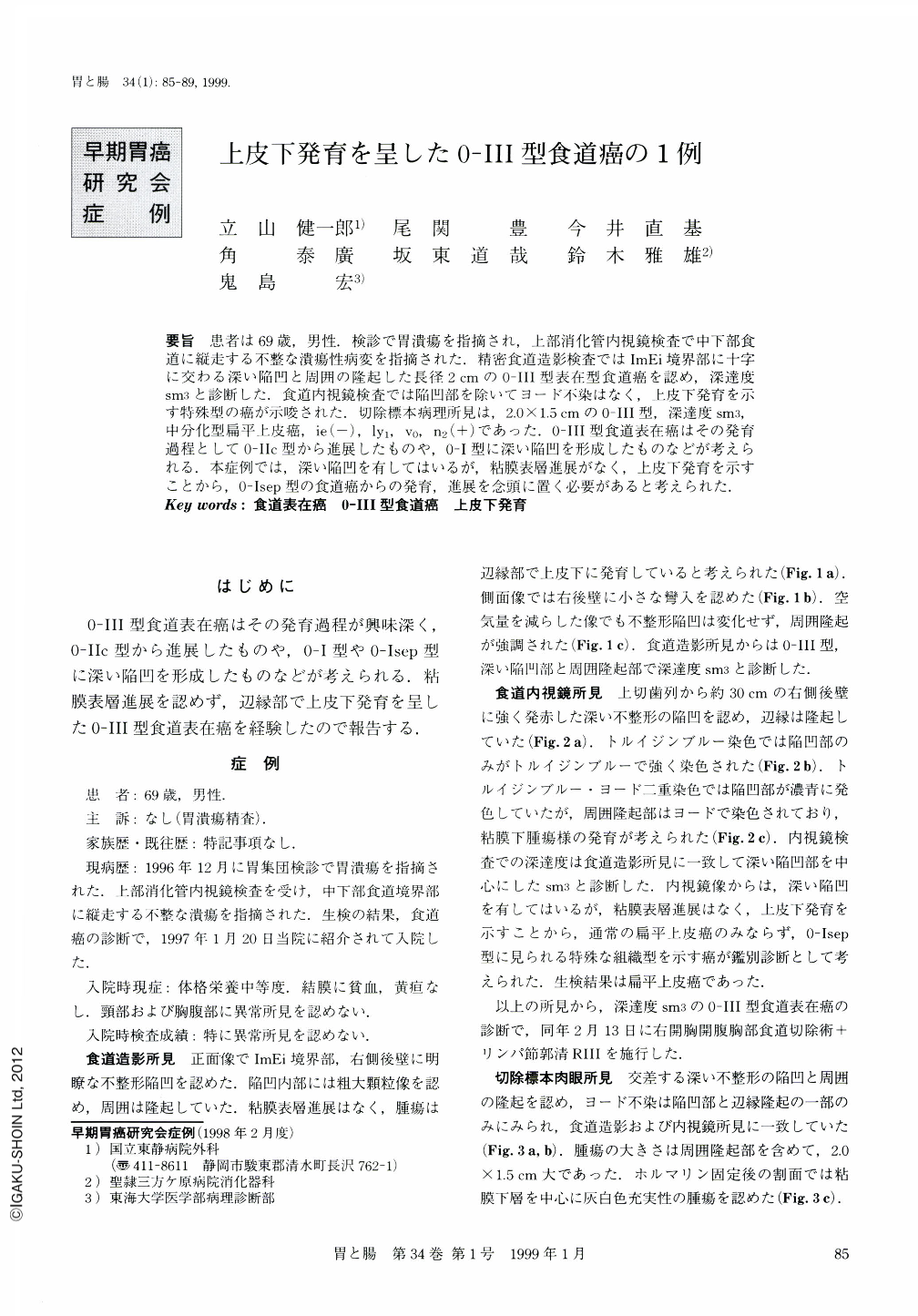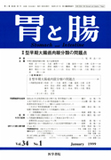Japanese
English
- 有料閲覧
- Abstract 文献概要
- 1ページ目 Look Inside
要旨 患者は69歳,男性.検診で胃潰瘍を指摘され,上部消化管内視鏡検査で中下部食道に縦走する不整な潰瘍性病変を指摘された.精密食道造影検査ではⅠmEi境界部に十字に交わる深い陥凹と周囲の隆起した長径2cmの0-Ⅲ型表在型食道癌を認め,深達度sm3と診断した.食道内視鏡検査では陥凹部を除いてヨード不染はなく,上皮下発育を示す特殊型の癌が示唆された.切除標本病理所見は,2.0×1.5cmの0-Ⅲ型,深達度sm3,中分化型扁平上皮癌,ie(-),ly1,v0,n2(+)であった.0-Ⅲ型食道表在癌はその発育過程として0-Ⅱc型から進展したものや,0-Ⅰ型に深い陥凹を形成したものなどが考えられる.本症例では,深い陥凹を有してはいるが,粘膜表層進展がなく,上皮下発育を示すことから,0-Ⅰsep型の食道癌からの発育,進展を念頭に置く必要があると考えられた.
The patient was a 69-year-old man, who, on the occasion of a physical check-up, was suspected of having a gastric ulcer. Endoscopic examination of the upper gastrointestinal tract was performed for confirmation of the diagnosis. The endoscopic finding revealed an irregular ulcerative lesion running longitudinally from the middle to the inferior portion of the esophagus. The esophagographic examination performed for the lesion demonstrated a probable esophageal cancer 2 cm in diameter. It was a type of 0-Ⅲ with a depth of sm3, which was recognized as a deep and cross-shaped ulceration with a swollen margin, occupying the border between the Im and Ei portions of the esophagus. We suspected, by the endoscopic examination, a specific type of esophageal cancer which had expanded under the submucosa and therefore could not be iodinestained except in the ulcerative part of the lesion. Histopathologic examination of the resected specimen indicated a moderately differentiated squamous cell carcinoma 2.0×1.5 cm in size, type 0-Ⅲ, a depth of sm3, ie (-), 1y1, v0, and n2(+). Growth patterns of type 0-Ⅲ carcinoma are intriguing. This type of carcinoma is thought to be formed by progressive growth of a 0-Ⅱc type of carcinoma or by the presence of a deep ulceration added to a 0-Ⅰ type of cancer. Although having deep ulceration, the esophageal cancer presented here may have originated from a histologically special type of cancer as much as 0-Ⅰsep type with no expansion along the mucosa but having submucosal growth. The histologic type of carcinoma, which is important for clinical reasons, should be determined when evaluating patients with esophageal cancers such as the one presented in this report.

Copyright © 1999, Igaku-Shoin Ltd. All rights reserved.


